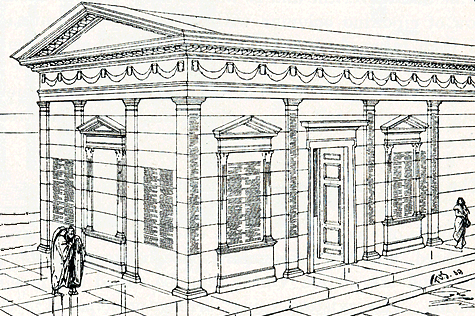
You are standing before a very old and significant religious building of the Romans, on whose inscribed walls you can read the fasti consulares et triumphales, the official lists of consuls and triumphs from Romulus to Caesar. This is the Regia, whose name means "royal palace." The Romans traced the origins of this site back to the eighth century BCE when Numa Pompilius, the second king of Rome, was thought to have lived here:
Numa in colle primum Quirinali deinde propter aedem Vestae in regia quae adhuc appellatur (Solinus, Collectanea, I.21).
"Numa first lived on the Quirinal Hill, and then in the palace next to the Temple of Vesta which is still called Regia."
Later the Regia became the official headquarters of the Pontifex Maximus and the religious center of the city during the Republic. In addition to the offices of the Pontifex, the Regia also housed relics and objects sacred to the gods Mars and Ops.
In 14 BCE Augustus became Pontifex, but he did not use the Regia for his office. He also transported to a shrine on the Palatine some of the important religious artifacts from the Regia, including the shields and spears of Mars. After this the site never regained the importance it had during the Republic, but it continued to hold the yearly records of the Pontifex on which the Annales Maximi were based.
See also a plan of the Regia and current remains of the site.